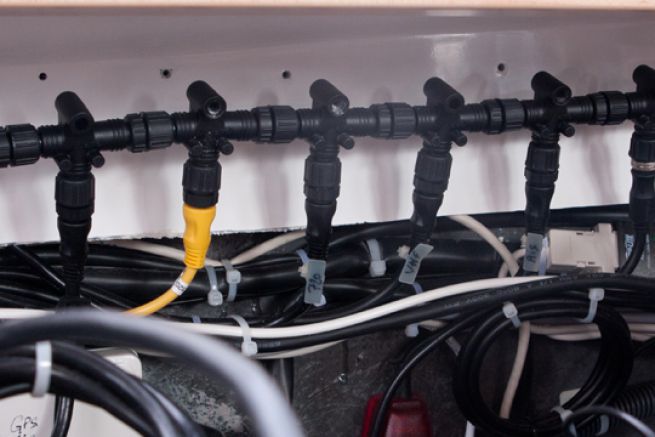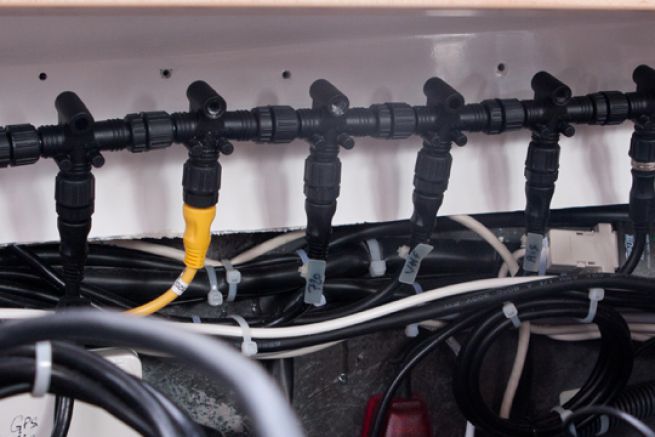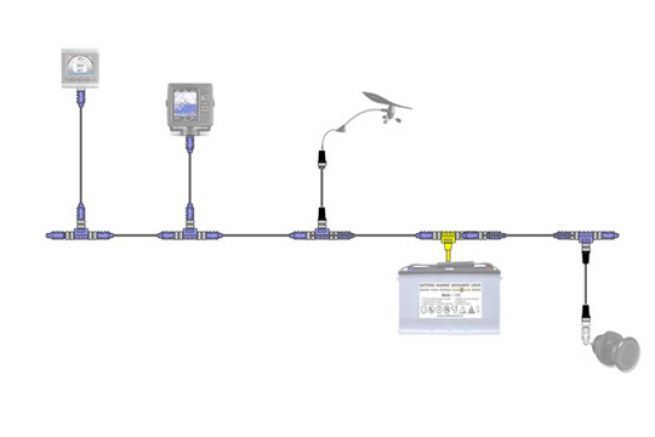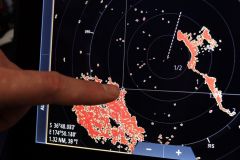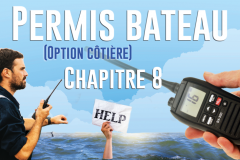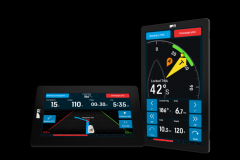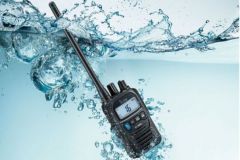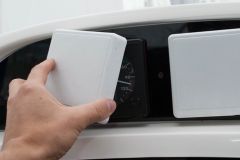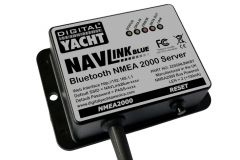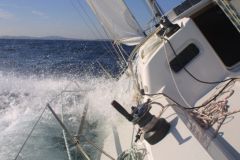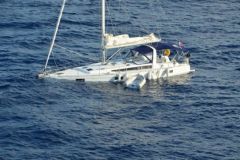What are we talking about?
When you start to get interested in marine electronics, it's impossible not to come across the NMEA protocol. What the hell are we talking about? To understand, a little history clarifies ideas.
The NMEA is a standard controlled by the National Marine Electronics Association (NMEA), an American association of boat electronics manufacturers. This association works so that all devices, even those of different brands, can communicate with each other.

NMEA 0183 was the first standard to be published. Today it has limitations since it uses a simple serial connection (limited in number of connections and transfer speed). In addition, many manufacturers"interpret" this standard in their own way, without really respecting the instructions.
At the beginning of the 2000s, the NMEA 2000 protocol appeared, opening up much faster and more standardised exchanges.
NMEA2000 revolutionizes the way electronics are thought on board
On the bus - meaning by"bus" two simple electric wires - circulate all the information on board. All sensors, whether speed, depth, wind... but also engine information or levels in tanks (water, fuel...) are accessible by all displays.
No more dedicated navigation unit or the sounder that was only probing. The displays are therefore multifunctional and it is up to the user to display the information he needs. The yachtsman will thus have to imagine his way of navigating (at the chart table, at the helm, on the fly...) and to arrange the screens in function.
An evolutionary construction
This description remains for many in the realm of the imagination, because the main brake will be the budget of such an installation, I grant you.
But the big advantage of the NMEA 2000 is its ease of evolution. If you start with a sensor and a screen, nothing prevents you from adding another sensor the following year whose data will be displayed on the same screen..
This modification is done simply by adding a T-connection in the middle of the network, by connecting 2 standard sockets. And that's it!
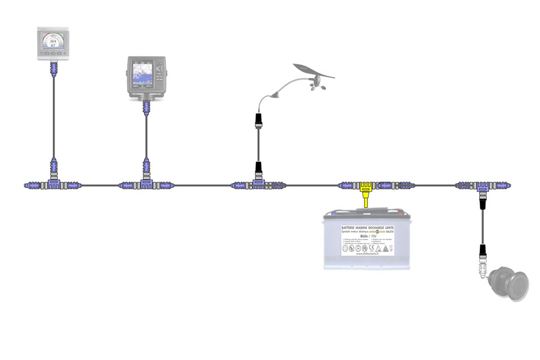
Unbelievable possibilities
The possibilities of a NMEA 2000 network are almost endless and new compatible accessories regularly appear among manufacturers.
NMEA 2000 devices could be divided into two families: sensors and displays.
We have seen that all information can circulate on this network - except the video which is too greedy. By boat, we think first of the:
- speedometer for speed
- depth sounder
- weather vane
- wind anemometer
- ...
But there's also all the information from the engine(s)
- system
- temperature
- oil pressure
- ...
We can also have probes on the levels of the tanks on board:
- water reservoir
- black water
- fuel
- ?
Or even detect the water level in the bottom.
Today, it is even possible to control relays that switch on lighting or high beam lights.
Displays are configurable screens that display information circulating on the network. Graphics and colors, the screens are bright and pretty. Why deprive yourself?
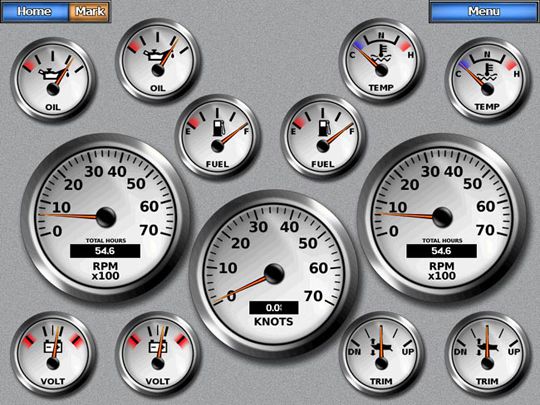
Why should I switch to NMEA 2000?
The advantages of this network are obvious. The simplicity of implementation with a scalable assembly. A child could do this, simply plug in T's and plugs (like Lego). It's hard to be wrong.
And if you want to evolve, we insert an additional T and let's go for a new branch, a new accessory or a new probe.
And no more proprietary networks. With the NMEA 2000, all brands communicate with each other. A brand anemometer is displayed on all screens on board, without distinction.
When you remember the days when you had to be sure of a brand's product tracking if you even wanted to change a screen. Today no more complexes, even for repair. If one screen dies, it can be replaced by another, wherever it comes from.
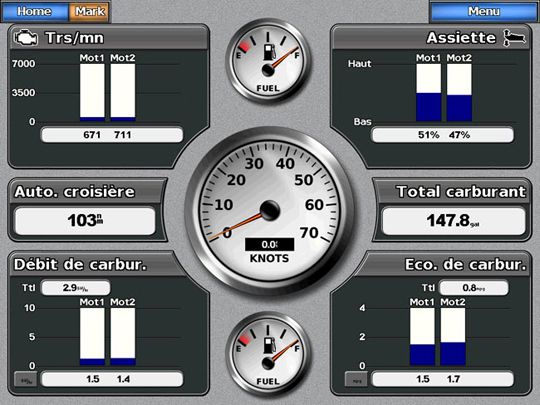
Oh, if everything was so pink!
There are, however, some constraints to the idyllic picture I have been painting for you since the beginning of this subject. Starting with the price of this installation.
These pretty little cables which come to be connected easily, waterproof and resistant, these cables thus, have a price... obviously higher, than the simple basic cable which one uses for NMEA 0183.
Another concern comes in the circulation of these cables on board. There is often not enough room to run a cable already mounted with its plug in a cable duct or behind a partition wall.
In this case, it will be necessary to be equipped with cable by the meter and to assemble oneself the plugs. Fortunately, this solution is planned by the manufacturers (at Maretron for example)
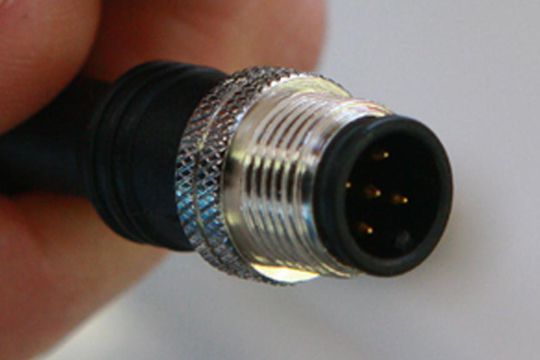
Ready to get started?
When you next purchase an electronic device for your boat, seriously ask yourself the question: NMEA 0183 or 2000? There is no doubt that if you have just read this subject, even if it is the first instrument on board, you would opt for the NMEA 2000.
But you already have old instruments talking in 0183 in your boat? Don't worry, there are bridges between these two networks 183 and 2000.
No more letting yourself be tempted for the navigation of the future!

 /
/ 